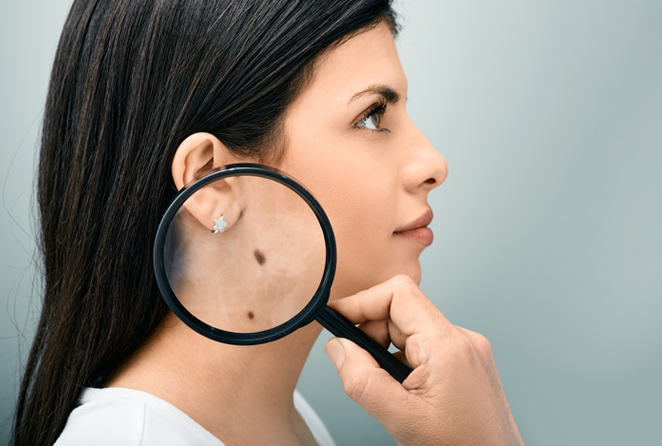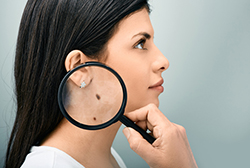
ABCDE’s of Dermatology
You may know your ABC’s, but do you know the ABCDE’s of dermatology? Memorizing this mnemonic phrase can help you spot the signs and symptoms of melanoma, a serious skin cancer. The ABCDEs of dermatology are an easy and helpful guideline to increase awareness about potential signs of melanoma.
What Are the ABCD’s of Dermatology?
The acronym ABCDs stands for Asymmetry, Border, Color, Diameter and Evolving. Healthcare providers look for these characteristics of skin damage to diagnose and classify melanomas.
A – Asymmetry: One half of the mole or lesion doesn’t match the other half in terms of shape, size, or color.
B – Border Irregularity: The edges of the mole are rough, blurred, or notched instead of having a smooth, defined border.
C – Color Variation: The mole has various colors or uneven pigmentation, such as shades of brown, black, red, white, or blue.
D – Diameter: Typically, melanomas are larger in diameter than the size of a pencil eraser (about 6 millimeters). However, melanomas can also be smaller.
E – Evolutionary Changes: This refers to changes in the mole over time, such as size, shape, color, itching, bleeding, or any other noticeable changes.
Melanomas can vary greatly in size and shape, and may not follow these guidelines exactly. Any changing or concerning mole should be examined by a dermatologist or healthcare professional for proper evaluation and diagnosis. Regular skin checks and professional screenings can be extremely helpful in detecting and catching skin conditions early on.
Melanoma is the #1 cancer killer in women in their 20s, so early detection is essential for good health. The American Academy of Dermatology recommends taking safe sun-protective measures, and performing monthly self-skin assessments at home for optimal skin health. The providers at the Pure Dermatology & Cosmetic Center recommend an annual full-body skin evaluation to help detect skin cancer or skin pre-cancers in all patients starting in the late teenage years. During your annual full-body skin examination, our providers will discuss the “ABCDEs” of melanoma and discuss how to detect them.





